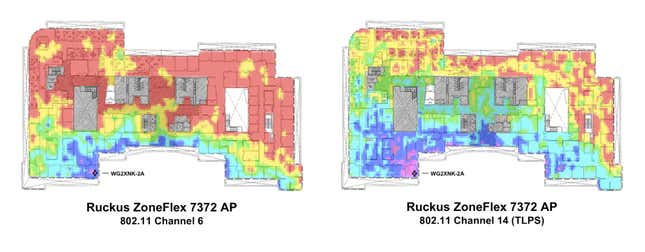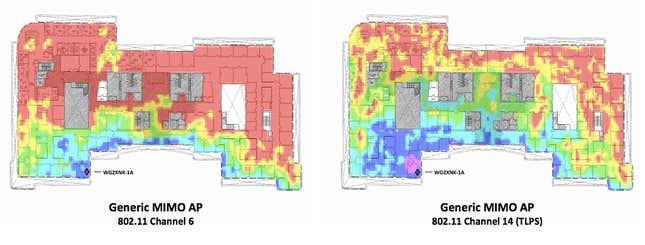A plan akin to adding more lanes of highway to the wireless internet traffic jam is taking shape, and you can already see the results. We’ve told you about a plan from GlobalStar, a satellite company, to turn the spectrum it uses to communicate in space into a new wireless network for earth. With an experimental licence from the US Federal Communications Commission, it has now demonstrated how effective its network could potentially be.
GlobalStar holds the rights, in the US and around the world, to a block of spectrum—on earth and not just in space—adjacent to what’s currently used for Wi-Fi. It is currently exploring using some of that spectrum to add an extra channel for Wi-Fi use, which consumers could theoretically access through a software upgrade. There would be some sort of charge for most people to send data over this new uncrowded wireless lane (hospitals and schools and emergency services would likely get a break.) But given looming issues with data crowding in Wi-Fi spectrum slowing internet traffic, that’s a promising market.
The charts below tell the story of a test (PDF) performed in a Boston office building, comparing coverage via conventional Wi-Fi channels and the GlobalStar spectrum. The cooler the color, the better the connectivity to a wireless access point in the building, with red representing a dead zone. On the left, you see the results of using conventional Wi-Fi channels, while on the right, what GlobalStar’s new network provided:

The difference is pretty stark. In the first test above, a wireless access point specially developed by Ruckus Wireless for the new network was placed in the front of the building, and provided three to five times the connectivity when using the new channel. The company’s executives attributed the results to the lack of interference from other nearby Wi-Fi users. Similar results were seen using a generic wireless access point, below:

The tests also showed that traffic on the new channel doesn’t interfere with existing Wi-Fi traffic. But while this early performance is promising, the challenge with Wi-Fi comes with overcrowding. It will be interesting to see what the results of this test look like when multiple users are on the new network. The company says central control of the network will allow it to manage interference between hotspots in ways that the decentralized public Wi-Fi network cannot. Full deployment awaits the FCC’s approval, and these results will likely to help the cause.